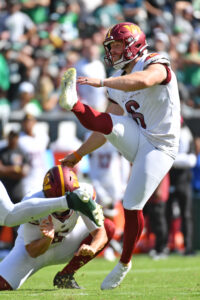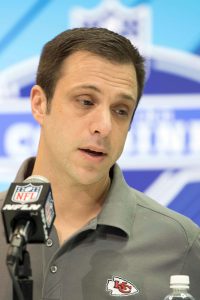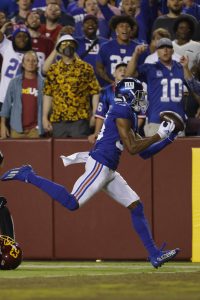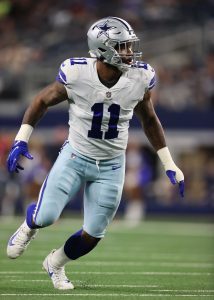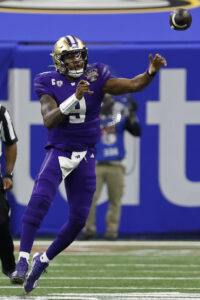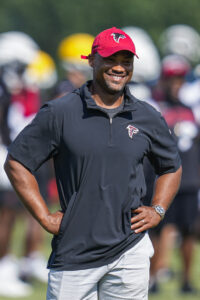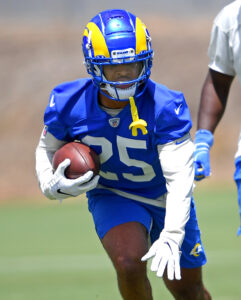Giants GM Joe Schoen has repeatedly indicated Daniel Jones is on track to return by training camp and reprise his role as the team’s starting quarterback. The team also showed tremendous confidence in the rehabbing QB by using the No. 6 overall pick to draft Malik Nabers, doing so despite extensive work on this year’s passer class.
Jones’ resume doubles as an unusual one for a quarterback on track for a sixth year as a team’s starter, but the party line (and Jones’ contract) centers around that being the Giants’ path. However, more rumblings about a QB competition are coming out. NFL.com’s Daniel Jeremiah said during his Move the Sticks podcast (h/t the New York Post’s Ryan Dunleavy) Drew Lock holds a legitimate chance to win that starting job.
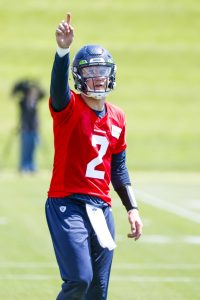 [RELATED: Giants Deny Daniel Jones Buyer’s Remorse]
[RELATED: Giants Deny Daniel Jones Buyer’s Remorse]
The Giants thoroughly scouted this year’s QB class, being closely linked to both Drake Maye and J.J. McCarthy and hosting the likes of Bo Nix and Spencer Rattler on “30” visits along with the recent North Carolina and Michigan starters. The value did not align for the Giants at No. 6, with a clear line of demarcation forming between Maye and the next tier at the position. That led to the team offering the Patriots Nos. 6 and 47, along with a 2025 first-rounder for No. 3 overall. As it stands, the Giants remain a Jones-centric operation.
“Yeah, for me, I said it in January after the season. Expectation was Daniel would be our starter and we brought Drew Lock in to be his backup and Tommy [DeVito] has been the backup,” Schoen said, via ESPN.com’s Jordan Raanan. “So that’s where we are and that’s how we’ll move forward this season. Daniel is still under contract for three more years. As it sits today, that is where we are.”
Certainly not a ringing Jones endorsement, Schoen’s comments come after Seahawks GM John Schneider said the Giants dangled the carrot of giving Lock a chance to compete for the starting job. Lock could well vie for playing time when Jones is healthy, the New York Daily News’ Pat Leonard adds.
Schoen’s assessment also points to a second “prove it” year for the 2019 No. 6 overall pick. Jones, 26, responded well to such a challenge in 2022, piloting a moderately talented Giants team to a surprising divisional-round run. But he fared poorly before going down last season, doing so after receiving $81MM guaranteed at signing. That deal guarantees Jones’ $35.5MM base salary this season. After this year, the Giants can move on without too much in the way of dead money.
The Giants’ QB research project pitted this year’s class against Jones and Lock, and Jeremiah adds Maye provided the cutoff point. The team used Lock as a central comparison tool while evaluating this year’s class, per Jeremiah, who said the former second-round pick has a “really good shot” of winning the Giants’ job. Given the team’s 2023 commitment to Jones, it would be borderline shocking if Lock — who signed a one-year, $5MM deal in March — beat him out. On the whole, however, Jones has not given the Giants what they hoped for in an Eli Manning successor. And just about everything went wrong for the five-year starter last season.
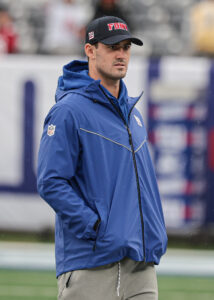 A March report indicated the Giants’ QB search largely hinged on a lack of confidence Jones could stay healthy. Jones’ health history also is believed to have partially influenced Lock’s decision to sign with the Giants. Two neck injuries — one of which requiring a 2022 surgery — have hindered the scrutinized starter, and he will not be full-go until at least training camp. That will open the door to Lock offseason starter reps. Those could be important, if this is to become a genuine competition.
A March report indicated the Giants’ QB search largely hinged on a lack of confidence Jones could stay healthy. Jones’ health history also is believed to have partially influenced Lock’s decision to sign with the Giants. Two neck injuries — one of which requiring a 2022 surgery — have hindered the scrutinized starter, and he will not be full-go until at least training camp. That will open the door to Lock offseason starter reps. Those could be important, if this is to become a genuine competition.
Chosen 36 spots after Jones in 2019, Lock lost a competition with Geno Smith in 2022 and did not threaten the latter’s job security last year. The former Broncos draftee has proven erratic when given extended run as a starter. Lock led the NFL in INTs during his last full-season starter run (2020), doing so despite only finishing 12 games. He also played the lead role in sinking the Broncos in 2021, starting the team’s final three games (all losses) after entering a Week 15 contest with the team at 7-6. Lock, 27, did play well in a start against the Eagles last year, leading a game-winning drive. Of course, the Eagles’ defense was on the brink of a full-on collapse at that point.
It would be interesting to see the Giants bail on Jones as their starter just as they have given him a No. 1-caliber wide receiver prospect; the team’s previous hopes at doing so failed miserably. But Jones has just one top-half QBR finish (2022) and one season with more than 15 TD passes (2019). He should be considered on the hot seat. The Giants also would owe an additional $12MM in injury guarantees if Jones is unable to pass a physical by the start of the 2025 league year.
Moving parts exist here, and while it would surprise if Lock received the call based on his past and the Giants’ Jones investment, this could be a storyline to monitor soon.
